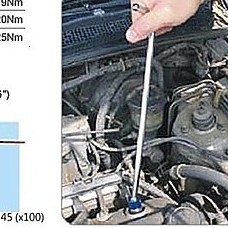Search the Community
Showing results for tags 'cloud'.
-
In 30 years, people will be able to leave their bodies and move their minds “to the cloud” https://anomalien.com/in-30-years-people-will-be-able-to-leave-their-bodies-and-move-their-minds-to-the-cloud/ ANOMALIEN.COM 05/23/2022 Incredible and somewhat frightening visions of the future will become a reality in the coming decades. According to futurologists, people of the future will gain immortality and will live in the body of a machine. Dr. Ian Pearson predicts that a person will be able to transfer his mind into a computer and one day he will go to a funeral where his previous biological body will be buried. Cyborgization has some good sides. Let us take into account that we will be able to exchange each of our limbs for a better one. Today’s advanced prostheses offer a sense of touch – we can feel, for example, the temperature, pressure or the material from which the object is made. We could get new legs which would practically solve the disability problem. In addition, we could insert implants into our brain that would improve our memory, intelligence or make it easier to learn new skills. However, futurist Dr. Ian Pearson points to opportunities in his blog that are partly fascinating and partly terrifying. According to him, future technological advances will allow us to obtain immortality by copying our mind and transferring it to the cloud. From now on, a person will be able to live forever in digital form and “settle” in the body of any cyborg. Dr. Ian Pearson believes that in this capacity we will be treated not as an ordinary computer program, but as a living, albeit digital, person. The futurologist believes that the first people will be able to do this by about 2050 at the latest, but cyborgization, at least at the initial stage, of course, will be available only to the richest. Digital immortality will become somewhat more accessible in the coming years as the prices of cyborgs fall, but today it can be assumed that the almost unlimited possibilities that arise as a result of transferring your mind into the body of a machine will rather be available only to a small group of people in the world.
- 22 replies
-
https://www.youtube.com/watch?v=OUJT96I-q_8 Now simi sai also cloud. Prepare for real life watch dogs 2 liao.
- 2 replies
-
- cloud
- technology
-
(and 2 more)
Tagged with:
-
A notable 34 percent of the respondents to our recent 2014 Public Safety Industry Study have moved or are considering moving data applications to a cloud-based solution over the next three years. This is a trend occurring across many industries. At the same time, current news headlines have caused discussion and doubt about the security of cloud services. So, what is ‘the cloud’, really? Is it secure or insecure? How can we properly leverage cloud services in a public safety environment? The term “cloud” comes from the standard symbol that network engineers have used to represent the internet for decades. On diagrams of organizations’ network devices and cabling, it’s an abstract concept which represents everything outside of the engineer’s control and sight. This abstractness has translated into the way we talk about cloud services today – we refer to ‘the cloud’ in a broad sense as some conceptual place we outsource our data for storage or processing. We might perceive internet-based services differently today if the standard symbol had been a menacing dragon, or perhaps most accurately, a question mark. So what is “the cloud”, really? The first and most crucial thing to understand is that cloud services aren’t abstract at all. The cloud is essentially a term for other organizations’ computer systems. Every bit of data we send to a cloud service provider is ultimately stored in some form on real hard drives, traverses real network cabling, and is processed by real software. Cloud providers use similar technologies to those we use within our own organizations. However, they do so at an exponentially larger scale, allowing them to offer services to many organizations simultaneously and at significant bulk cost savings. When we think about the cloud this way, our perspective should change. “The cloud” isn’t inherently more or less secure than any other digital system. These services are tools of varying quality which we can use to cost-effectively centralize our data storage, applications or processing. They provide us access to centrally-hosted hardware and software that may be more cost- and time-effective than in-house solutions. This centralization does provide an opportunity for improved security. Our data can be stored in a single defensible location, with uniform security controls. Since many organizations’ networks have grown too large and too piecemeal for limited IT staff to monitor accurately, a homogenous environment can make security monitoring and management more effective, less costly, and easier to handle. In an era of budget cutbacks, this can be a big help in getting our networks under control. However, cloud services come with an equal amount of security risk if they’re not used properly. We must keep in mind that cloud services still reside on real computer systems. First, we need to be fully aware of what data we are sending to the cloud provider. Are we certain we want to send all of our data outside our network? Secondly, we have to evaluate the level of physical and logical data security the cloud provider offers. What security controls do they have in place? Who has access to your data? How often do they perform certified security audits and scans, and can we see the results? Are they properly insured? What are their retention and destruction policies? Since cloud providers may spread data over many systems, in certain cases we may also be concerned with which countries our data is physically stored in. Next, we need to properly monitor the security of our data. If we rely on the cloud provider’s security monitoring, we need to understand what it involves and how soon we will be notified of an attack or data breach. Preferably, we should be receiving meaningful security and access logs for our own review. Lastly, we must ensure that our data is secure as it is transmitted to and from the cloud provider. We’re transferring our sensitive data to the cloud provider, and it may be at its most vulnerable as it is transmitted between our networks. We must ensure it is properly encrypted and controlled in transit as well as at both endpoints. Cloud-based services can provide cost savings, centralization, and easier management and monitoring of data and applications for public safety organizations. They can also provide a standardized and defensible security platform for our data and applications. Despite this, we must carefully evaluate these services as what they actually are: off-premise computer systems which are only as secure as they are designed, implemented, and monitored to be. By understanding this and asking the right questions, we can make educated decisions about how we can best leverage cloud service providers. Lesley Carhart is the Incident Response Team Lead for the Motorola Solutions Security Operations Center. She has 14 years of experience in information technology, including computer networking and tactical communications. For the past five years, she has focused on security, specializing in digital forensics. http://communities.motorolasolutions.com/community/north_america/fresh_ideas/blog/2014/09/25/what-is-the-cloud-and-how-secure-is-it
-
Any one can recommend reliable and responsive provider?
- 2 replies
-
- Need
- recommendation
- (and 4 more)






